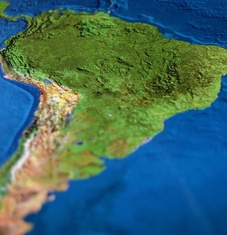
Five Islands of The Americas - Part 1
First published: Saturday March 16th, 2024
Report this blog
Introduction
I'm back! It has been a while since I wrote about islands, and I felt like I would never return. However, I've just had a week away and thought I should make amends. Cape Verde is lovely at this time of year by the way!
So anyway, refreshed from a relaxing week in the sun, I've dug out my research folder and decided to start writing this blog.
I have an idea for another series once the Americas are finished, but more of that in a few week's time. Just a teaser, but it will follow on from one of my previous blog series.
Enough procrastinating, on with the blog. We will begin in the southern part of South America and slowly work our way north, calling in with MG17 in Brazil for a cup of coffee, and a slice of cake...hopefully!
Martin Garcia Island (Argentina)
Martin Garcia Island is the name of the southern half of the island that Argentina shares with Uruguay. The northern part of the island is called Timoteo Dominguez. It is situated in the Rio de la Plata or River Plate and falls within Buenos Aires province.
The island was discovered during the expedition of Spaniard Juan Dias de Solis in 1516. It is named after the ship's storekeeper who died on board and is buried on the island.
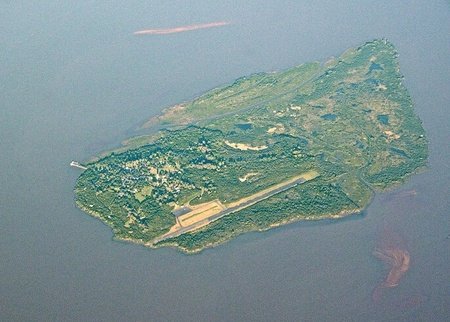
The island has been the scene of several battles in various wars over the centuries, mainly due to its strategic position at the confluence of the Parana and Uruguay Rivers. The island was used as a penal colony between 1765 and 1886 and was fortified with a military garrison being built.
There was even a microstate proposed with Argentina, Uruguay, and Paraguay having equal rights over its administration.
Nowadays, the island is given over to tourism and attractions include the old penitentiary, Chinatown, and a forest inhabited by red deer.
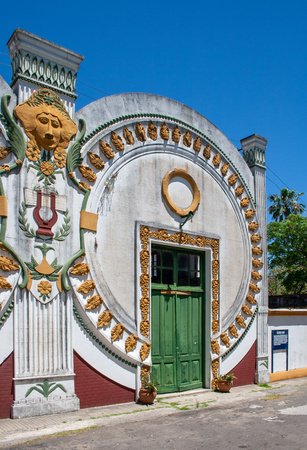
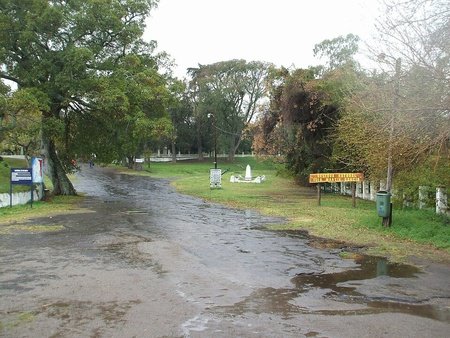
The island can be reached by boat from the port of Tigre in Buenos Aires, the journey takes approximately two hours.
There are also boats leaving the ports of Colonia del Sacramento, Carmelo, and Nueva Palmira in Uruguay. The island is closer to Uruguay than Argentina.
This website has a description and photographs of the island.
Mocha Island (Chile)
Mocha Island is situated in the Pacific Ocean about 30 kilometres from the mainland to the east of the small town of Tirua. The Mocha Island Nature Reserve takes up 45% of the land on the island. There are many historic shipwrecks around the island.
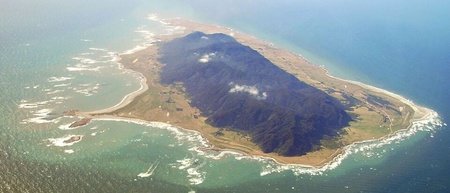
The island has been home to an indigenous group of Mapuches since at least the fifteenth century. The first record of a European explorer visiting the island was in 1544 when Juan Batiste Pastene documented the island.
The island was visited regularly by pirates and privateers from the Netherlands and England including Francis Drake who used it as a supply base on his circumnavigation of the globe.
There is evidence in a museum in Concepcion on the mainland of Polynesian contact that was found on Mocha Island.
The waters around the island were home to a sperm whale known as Mocha Dick, an article written in a New York magazine in 1839 was the inspiration behind Herman Melville's novel, Moby Dick.
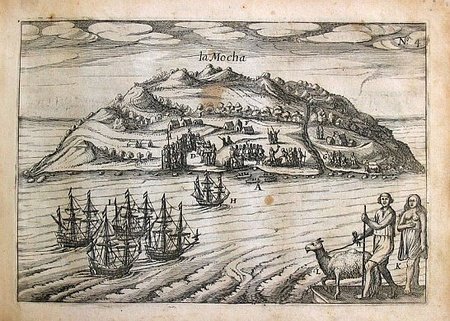
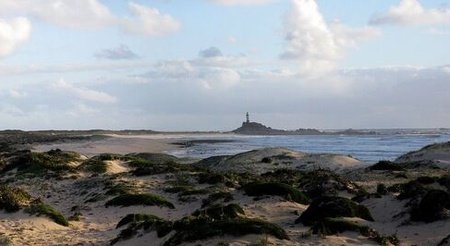
Getting to Mocha Island can be a challenge. There are flights from Carahue every day except Sunday or boats can be hired if you want to travel by sea. Alternatively, there is a supply barge that travels regularly. Tents can be pitched anywhere on the island, although staying overnight, especially on the beach can be hazardous.
This blog has a description of the journey to Mocha and travels around the island, along with lots of photographs.
Isla de Lobos (Uruguay)
Not to be confused with Lobos Island which is in the Rio Negro river, Isla de Lobos is situated about 8 km or 5 miles southeast of Punta del Este in the South Atlantic Ocean.
The island is part of the Coastal Islands National Park.
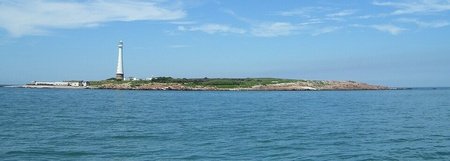
Since 1991, it has been forbidden by law to hunt wildlife on and around the island, although before this date the area was commercially exploited.
It was first documented by Juan Dias de Solis in 1516. Remember him? He's the guy who discovered our Argentinian island earlier in the blog! He named the island "San Sebastian de Cádiz", although just twelve years later it was renamed by another explorer as "Island of the Snapper". I presume because of the turtles rather than a group of paparazzi photographers.
The Uruguayan government built a lighthouse in1858 which was rebuilt in 1906. The balcony of which gives excellent views of the island and the distant coastline of the mainland. In 2001, it became Uruguay's first automated lighthouse.
The island has one of the world's largest colonies of sea lions, fur seals, and elephant seals. The seas around are visited by orcas and other whales.

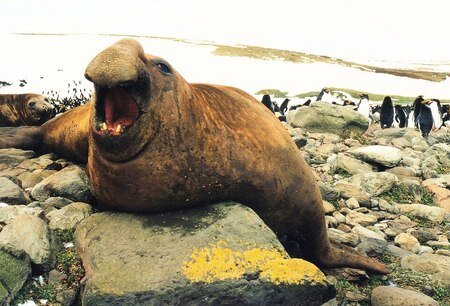
The island can only be visited on an organised tour, it is a protected island and nature reserve. Boat tours can be arranged from Punte del Este, shorter 2-hour cruises sail around the island whereas longer half or full-day tours allow time ashore to visit the lighthouse.
This YouTube video shows a visit to the islands.
Isla del Sol (Bolivia)
"But, Bolivia is landlocked", I hear you cry. Yes it is, however, Bolivia and Peru share the largest lake in South America, Lake Titicaca. Also known as the highest navigable lake in the world, it boast several islands. Isla del Sol is in the southern part of Lake Titicaca and the main industry for it's inhabitants is farming, although there is some tourism.

There are many archaeological remains on the island, some evidence has been found that suggests people were living, or at least visiting, the island in the 3rd millennium BC. In Inca mythology, it is believed that the island was the dwelling place of the sun, hence the island's name. A temple was built as well as an inn for pilgrims during the reign of the 10th Inca, Túpac Inca Yupanqui whose name translates as "noble Inca accountant".
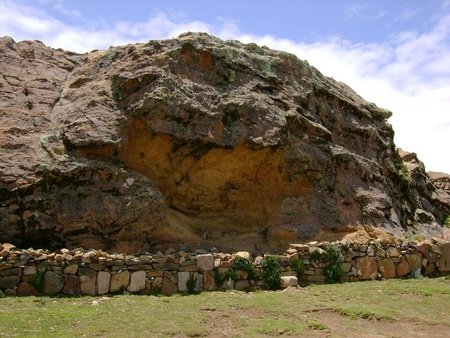
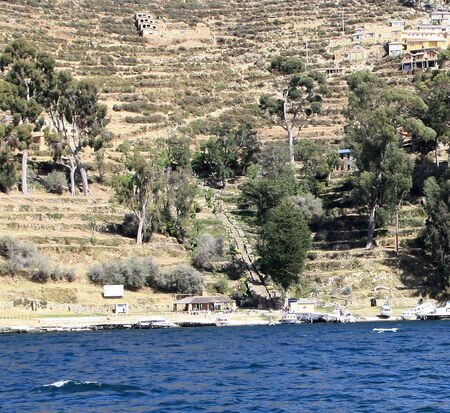
The only sensible way to get to Isla del Sol is by boat from the town of Copacabana on the nearby shores of Lake Titicaca. The journey takes between one and a half to two hours. Tickets can be expensive if bought through official channels, however, a passage can be bought from kiosks on the dockside for considerably less.
This Travel Blog has a comprehensive account of a visit along with excellent photographs.
Montão de Trigo Island (Brazil)
This island is located about ten kilometres, or just over six miles, from the Brazillian coast south of São Sebastião in the state of Sao Paulo.
It's name translates as "Wheat Pile Island" presumably due to it's shape on the horizon.
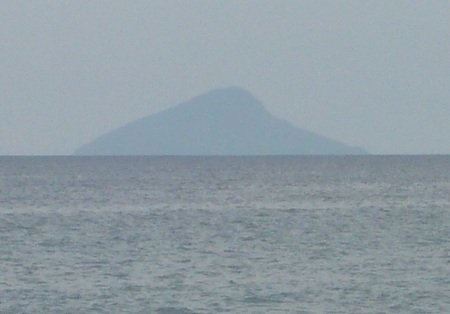
The island has a rough terrain and is covered by dense forest which makes it difficult to explore. The coast of the island is also rocky, hindering, or even prohibiting access, at times.
The local sea life is not excessive, however, caves provide refuge for several species of lobster, fish and whales can be seen nearby.
Until the 20th century, the inhabitants of the island produced coffee and cassava that was made into flour. Production was curtailed due to an influx of rats, said by locals to have arrived in a shipment of bricks during the construction of a school in 1986.
The island has been inhabited for at least 300 years and was used, along with other nearby islands, as a lookout point to spot anti-slave trade enforcement boats.
Nowadays, the island receives aid and grants from the government. In fact, it was the first island to receive certain help that was normally reserved for inland river communities.
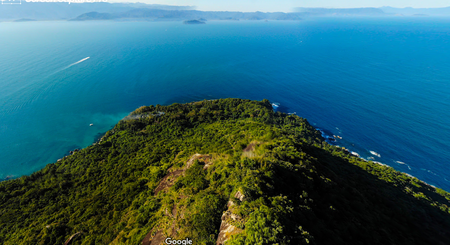
The island can be reached by boat from Juquei or Barra do Una beaches on the mainland. The journey takes between 20 minutes and an hour.
This YouTube video documents a visit.
Summary
You may have noticed that this blog is a little shorter than some of my other "Five Island" blogs. There is a reason behind this, I am currently packing everything into boxes prior to a house move at the beginning of April. I will be moving to a new town, only a few miles away, and actually, back to the town I was born in. Going right back to my roots you could say! I have a myriad of things to sort out, including a new broadband package. My current supplier, with my 500+ mbps full fibre service, doesn't operate there unfortunately, but I can't not move on just for the sake of internet service.
Anyway, enough about my first-world problems, this blog has taken far too long to write and I can't wait to finish the series and move on to the next project. I will still be making a few other blogs as well, I have one already half-written about songs again.
Until next time my friends,
Adios Amigos!

Congratulations on the move, I hope everything will work out as planned!
Do not tell a Bolivian they are landlocked. Poor Bolivia still keeps a navy in hopes one day they shall reclaim the land lost to Chile
Since you are returning to the town you were born, in Physics (and based on this do not think i like physics) you will have a very small displacement, even though you are a worldly traveler. (travel blog series when)